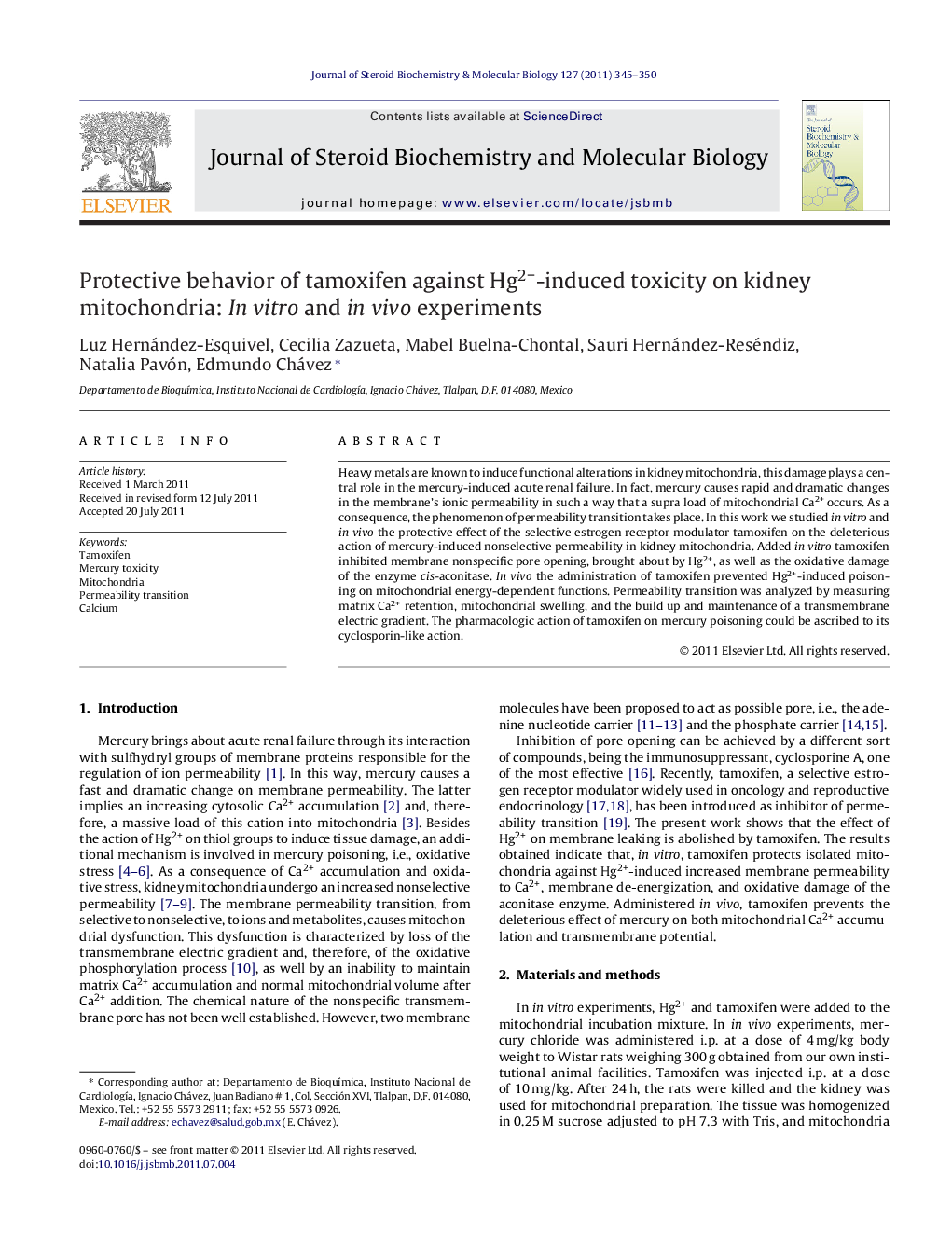| Article ID | Journal | Published Year | Pages | File Type |
|---|---|---|---|---|
| 1991835 | The Journal of Steroid Biochemistry and Molecular Biology | 2011 | 6 Pages |
Heavy metals are known to induce functional alterations in kidney mitochondria, this damage plays a central role in the mercury-induced acute renal failure. In fact, mercury causes rapid and dramatic changes in the membrane's ionic permeability in such a way that a supra load of mitochondrial Ca2+ occurs. As a consequence, the phenomenon of permeability transition takes place. In this work we studied in vitro and in vivo the protective effect of the selective estrogen receptor modulator tamoxifen on the deleterious action of mercury-induced nonselective permeability in kidney mitochondria. Added in vitro tamoxifen inhibited membrane nonspecific pore opening, brought about by Hg2+, as well as the oxidative damage of the enzyme cis-aconitase. In vivo the administration of tamoxifen prevented Hg2+-induced poisoning on mitochondrial energy-dependent functions. Permeability transition was analyzed by measuring matrix Ca2+ retention, mitochondrial swelling, and the build up and maintenance of a transmembrane electric gradient. The pharmacologic action of tamoxifen on mercury poisoning could be ascribed to its cyclosporin-like action.
► This work shows that tamoxifen avoids the deleterious action of mercury on mitochondria. ► Such protective action was demonstrated in vitro and in vivo experiments. ► In vitro tamoxifen prevented non-specific pore opening and oxidation of cis-aconitase. ► In vivo tamoxifen preserved Hg2+-induced poisoning on mitochondrial-energy functions.
